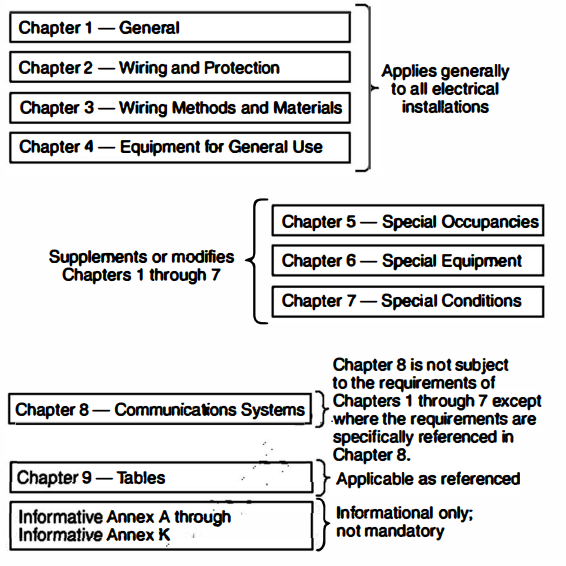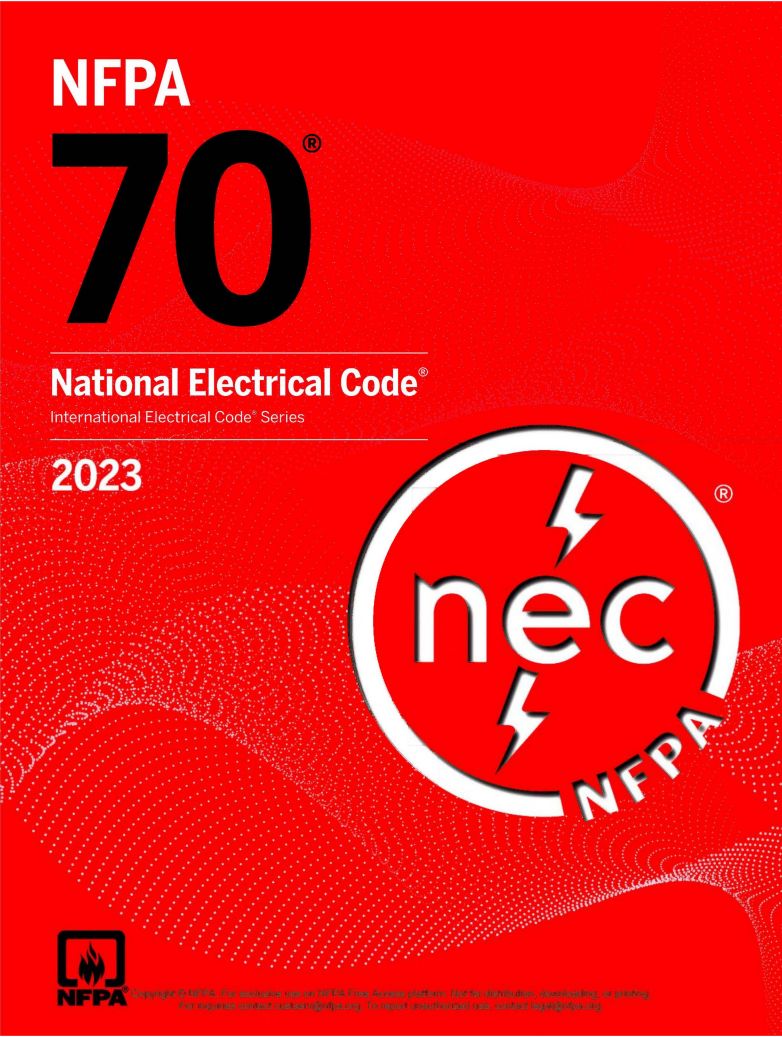Overview of the NEC
Overview of the NEC
We have mentioned the National Electrical Code in previous lessons. The NEC is published by the National Fire Protection Association. The NFPA was created in the late 1800s to address issues with the installation of fire sprinkler systems. Around that time, there were several competing standards related to the installation of electrical circuits in buildings. In 1896, representatives for each of the standards met and agreed to create one single standard. The NFPA created the NEC in 1897. This code is revised every three years.
The NEC is revised and updated by a group of professional volunteers committed to ensuring the highest levels of quality and safety in electrical installations! The NEC is updated every few years, so make sure the standards you are using are the most up-to-date!
The NEC is not something created by the US government, nor is it a law itself. But, since it is a single source of every current best practice in commercial, industrial, and residential electrical installation, it is often mandated by state and local governments as ‘code.’
The NEC is approximately 900 pages long and is broken down into nine chapters. These chapters cover everything from wiring materials and methods, types of circuit protections, communication equipment, and many special cases and equipment that an electrician may run into. Finally, the last chapter is made up of tables, which can be used as a reference guide. Below is a quick reference on the different chapters found on page 25 of the NEC.

To use the NEC, most of the items needed by an electrician will be found in chapters 1-4. So, for example, if you were hired by a homeowner to install a backup generator at their house, you could check the table of contents (under chapter 4) to see that generators are covered starting on page 371. On pages 371 and 372, an electrician can read about the current code for the installation of generators, and it also cross-references other sections in the NEC to ensure compliance with all applicable codes in the book.
